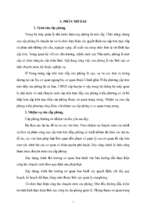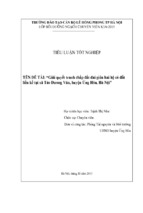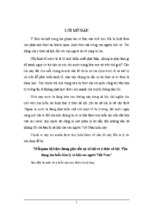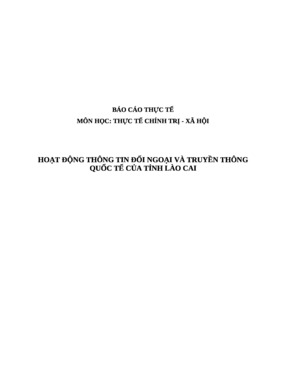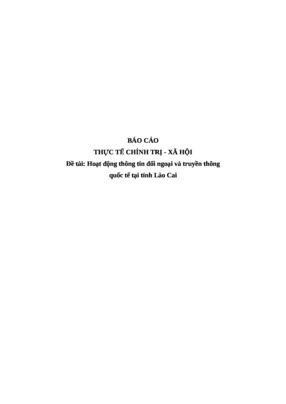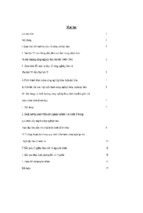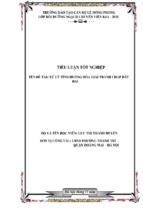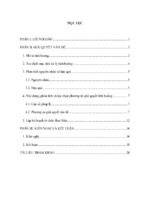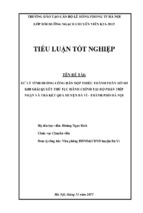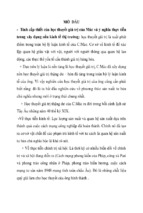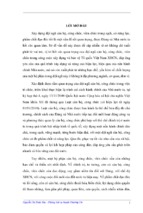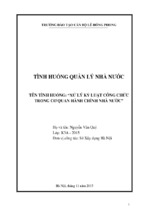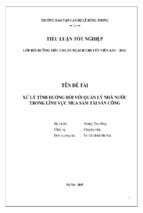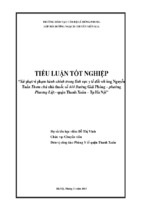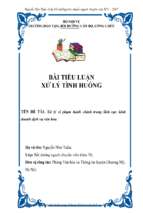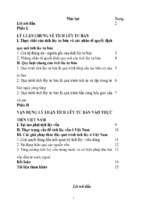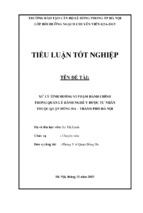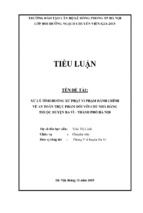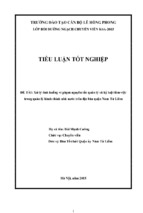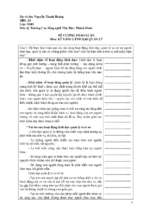Make, buy or rent decision for information
systems in the heavy engineering industry
by
Thomas Francois Matthee
21919968
Mini-dissertation submitted in partial fulfilment of the requirements
for the degree
MASTERS OF BUSINESS ADMINISTRATION
at the
Potchefstroom Business School of the North-West University
Study Leader: Mr. JC Coetzee
POTCHEFSTROOM
October 2011
ACKNOWLEDGEMENTS
I want to acknowledge the following persons for assisting me during the writing of this
mini-dissertation:
� My Heavenly Father, for giving me this unique opportunity.
� My wife, Celestê, for her patience and understanding throughout the M.B.A.
studies.
� My children, Francois and Aden, for putting up with daddy's long periods of
absence.
� My study leader, Mr J.C. Coetzee, for his invaluable assistance, patience,
motivation and guidance.
� Mari Van Reenen from the North-West University Statistical department, for her
assistance and guidance.
� The members of my study group who guided me through on my shortfalls and
supported me when necessary.
� To my employer, for funding my studies and also for all their invaluable
assistance, patience, motivation and guidance.
� All the respondents to the survey questionnaire, for their valuable input.
� All family, friends and colleagues, for their interest throughout my studies.
ii
ABSTRACT
The study focuses on the use of information systems in the Heavy Engineering industry in South
Africa and the decision to make, buy or rent information systems. Special focus was placed on
the factors that influence the decision to make, buy or rent information systems. It is undeniable
that changes in the competitive environment, such as technological advances and globalisation,
are driving organisations toward new ways of operating. In striving to become flexible, lean, and
more competitive, organisations have been increasingly swift to externalise support service
functions.
Every organisation must adapt to the current economic environment, the technology available in
its industry and consider the risk and rewards within the industry framework. Organisations
should carefully analyse the impact of their decisions, especially in consideration of the extent to
which organisational competencies and competitive advantage could be affected.
An extensive literature study was conducted on the factors that influence the decision to make,
buy or rent. The literature study portrays the ideal state or methodologies for acquiring
information systems and the best practices used in evaluating the best option for the
organisation. The literature indicated the criteria for evaluating the decision to make, buy or rent
information systems are the business need, in-house experience, project skills, project
management and the time frame. These criteria can be broken down into the factors that have
an influence on the decision, competitive advantage, security, skills, expertise, available
resources,
cost,
time,
implementation,
support,
maintenance,
performance,
quality,
documentation, vendor issues, size of organisation, expected annual transactions, software
control, functionality, productivity and increased turnover.
Calculating the benefit that can be achieved from information systems must also include
measures to incorporate the total benefit, not only the financial benefit. The balance scorecard
approach measures the total return accompanying an investment in information systems,
broken down into four sections, the financial perspective that measures the tangible outcomes,
the customer perspective that measures customer value (quality, delivery and skill), the internal
process perspective that measures the internal processes that add value and have the greatest
impact on strategy and finally the learning and growth perspective that measures the intangible
assets which focuses on human capital. Information systems form part of the corporate strategy,
competitive positioning and must be aligned with the overall strategy of the organisation.
iii
A
survey
was
done
to
determine
the
opinions
about
the
different
options
managers/organisations have to consider when seeking to fulfil organisational requirements for
information systems. Methodological issues as well as considerations with regard to gathering
the data were discussed. A questionnaire was designed to collect data to obtain the information
needed to solve the research problem. The internal consistency of the questionnaire was tested
and it was found that a moderate to high level of consistency exists. The survey results were
then presented in frequency tables and were analysed using descriptive statistics as well as
inferring possible trends or conclusions based on relationships between certain responses on
specific related questions and referring to the literature study.
A framework was compiled from the literature study and empirical study that can be used for the
purpose of decision-making in the make, buy or renting of information systems in the heavy
engineering environment in South Africa. Benefits from purchasing software from a vendor
include competitive advantage, available resources, implementation of the system, support to
the system, system performance, documentation and training, and business functionality.
Benefits from open source offerings include the size of the organisation and the number of
expected annual transactions by the organisation. Benefits from SaaS (Software as a service)
include competitive advantage, expertise, system performance and business functionality.
Benefits from the outsourcing of development and other IT functions include competitive
advantage, security, skills, available resources, implementation of the system, support to the
system, system performance, documentation and training, business functionality and technical
functionality. Benefits from developing in-house all or part of the effort include competitive
advantage, security, skills, expertise, available resources, time, implementation of the system,
support to the system, maintenance and upgrades, system performance, quality, documentation
and training, business functionality, technical functionality, productivity improvements and
increased turnover.
Overall the linkage between the literature study and the empirical study concludes that a good fit
between the literature study results and that of the empirical results transpired.
List of key terms: Competitive advantage, productivity improvements, in-sourcing, outsourcing,
make, buy, rent, strategy alignment, business functionality, information systems, technology
evolution.
iv
TABLE OF CONTENTS
Abstract ........................................................................................................................... iii
List of figures ...................................................................................................................ix
List of tables .................................................................................................................... x
List of equations ..............................................................................................................xi
List of graphs .................................................................................................................. xii
List of abbreviations ...................................................................................................... xiii
CHAPTER 1: ORIENTATION AND PROBLEM STATEMENT ................... 1
1.1.
INTRODUCTION ............................................................................................................ 1
1.2.
IMPORTANCE OF THE STUDY ..................................................................................... 3
1.3.
CASUAL FACTORS ....................................................................................................... 4
1.4.
OBJECTIVES OF THE STUDY ...................................................................................... 4
1.4.1. Primary objective ............................................................................................................ 4
1.4.2. Secondary objectives...................................................................................................... 5
1.5.
SCOPE AND DEMARCATION OF STUDY .................................................................... 6
1.6.
RESEARCH METHODOLOGY ....................................................................................... 6
1.7.
DIVISION OF CHAPTERS.............................................................................................. 7
1.8.
CONCLUSION................................................................................................................ 8
1.9.
CHAPTER SUMMARY ................................................................................................... 9
v
CHAPTER 2: LITERATURE STUDY ........................................................ 10
2.1.
INTRODUCTION ...........................................................................................................10
2.2.
TECHNOLOGY EVOLUTION: MARKET LEADER OR FOLLOWER .............................11
2.3.
FUTURE TECHNOLOGY CAPABILITIES/PREDICTION ...............................................13
2.4.
INFORMATION SYSTEMS SUPPORTING BUSINESS PROCESSES..........................17
2.5.
OPEN SOURCE SYSTEMS ..........................................................................................22
2.6.
SOFTWARE AS A SERVICE (SaaS) .............................................................................23
2.7.
OUTSOURCING............................................................................................................26
2.8.
IN-SOURCING ..............................................................................................................30
2.9.
RENT, MAKE OR BUY DECISION FACTORS ..............................................................32
2.10. MANAGING RISK ASSOCIATED WITH INFORMATION SYSTEMS ............................38
2.11. RESISTANCE TO CHANGE IN INFORMATION SYSTEMS AND THE CHANGE
MANAGEMENT PROCESS...........................................................................................42
2.12. MEASURING CAPITAL INVESTMENT IN INFORMATION SYSTEMS .........................45
2.13. MANAGING THE INFORMATION SYSTEMS PROCESS IN MAKE, BUY OR RENT....49
2.14. CONCLUSION...............................................................................................................54
2.15. CHAPTER SUMMARY ..................................................................................................56
CHAPTER 3: RESEARCH METHODOLOGY AND FINDINGS ................ 59
3.1.
INTRODUCTION ...........................................................................................................59
3.2.
THE RESEARCH PROBLEM ........................................................................................59
3.3.
RESEARCH PARADIGM AND METHODS ....................................................................60
vi
3.4.
QUESTIONNAIRE DESIGN ..........................................................................................66
3.5.
POPULATION AND SAMPLING ....................................................................................67
3.6.
DESCRIPTIVE STATISTICS .........................................................................................68
3.7.
DATA ANALYSIS ..........................................................................................................73
3.7.1. Understanding the results ..............................................................................................74
3.7.2. Biographical information of the respondents ..................................................................77
3.7.3. Dimension reduction ......................................................................................................80
3.7.4. Data correlation .............................................................................................................83
3.7.5. Dimension reduction and data correlation ......................................................................88
3.7.6. Group means .................................................................................................................97
3.8.
CONCLUSION.............................................................................................................106
3.9.
CHAPTER SUMMARY ................................................................................................107
CHAPTER 4: CONCLUSIONS AND RECOMMENDATIONS ................ 109
4.1.
INTRODUCTION .........................................................................................................109
4.2.
CONCLUSIONS ON THE EMPIRICAL STUDY ...........................................................109
4.2.1 Market leader versus market follower ..........................................................................109
4.2.2 Sequential versus simultaneous ..................................................................................110
4.2.3 Factors that affect the decision to make, buy or rent information systems ...................112
4.2.4 Capital benefit of new and enhanced information systems...........................................115
4.3.
RECOMMENDATIONS ...............................................................................................116
4.3.1 Technology evolution: market leader or follower ..........................................................116
vii
4.3.2 Information system supporting business processes .....................................................117
4.3.3 Factors that affect the decision to make, buy or rent information systems ...................117
4.4.
CRITICAL EVALUATION OF THE STUDY ..................................................................118
4.4.1 Primary objectives re-visited ........................................................................................118
4.4.2 Secondary objectives re-visited ...................................................................................119
4.5.
SUGGESTIONS FOR FUTURE RESEARCH ..............................................................121
4.6.
CONCLUSION.............................................................................................................121
4.7.
SUMMARY ..................................................................................................................122
REFERENCES .......................................................................................................................125
APPENDIX A: QUANTITATIVE QUESTIONNAIRE.................................................................132
APPENDIX B: RESPONSE SUMMARY TABLE......................................................................148
APPENDIX C: ORGANISATION MAIL LIST ...........................................................................153
APPENDIX D: MANAGER VERSUS NON MANAGER GROUP MEANS ................................154
APPENDIX E: LEADER VERSUS FOLLOWER ......................................................................156
APPENDIX F: SEQUENTIAL VERSUS SIMULTANEOUS ......................................................157
APPENDIX G: DIMENSION REDUCTION AND CORRELATION ...........................................158
APPENDIX H: TEXT EDITOR’S DECLARATION....................................................................161
viii
List of Figures
Figure 2-1: Information Technology Organisation Strategy Map Template ................................20
Figure 2-2: Five Key Roles to Retain IS ....................................................................................30
Figure 2-3: The ERM Approach ................................................................................................41
Figure 2-4: Model depicting level of resistance to IT change .....................................................44
Figure 2-5: Balanced Scorecard Strategy Map ..........................................................................47
Figure 3-1: Qualitative Research "Underlying Philosophical Assumptions" ...............................62
Figure 3-2: Quantitative Research "Underlying Philosophical Assumptions" .............................65
ix
List of Tables
Table 2-1: Make Buy, or Rent Criteria .......................................................................................35
Table 3-1: Reliability of benefit scores summary .......................................................................82
Table 3-2: Dimension Groups and Correlation Matrix ................................................................96
Table 3-3: Make, Buy and Rent Response table grid ..............................................................100
x
List of Equations
Equation 3-1: Sample Size ........................................................................................................68
Equation 3-2: Mean calculation .................................................................................................69
Equation 3-3: Effect Size ...........................................................................................................70
Equation 3-4: Standard deviation calculation for population ......................................................70
Equation 3-5: Standard deviation calculation for sample ...........................................................71
Equation 3-6: Coefficient of variance.........................................................................................71
Equation 3-7: Normal probability distribution .............................................................................72
Equation 3-8: Confidence interval for the mean (δ is known).....................................................72
Equation 3-9: Chi-squared test..................................................................................................72
Equation 3-10: Cronbach’s alpha ..............................................................................................73
xi
List of Graphs
Graph 3-1: QQ plot ...................................................................................................................76
Graph 3-2: Box-and-Whiskers Plot ............................................................................................77
Graph 3-3: Manager versus non manager distribution...............................................................78
Graph 3-4: Age group of respondents .......................................................................................79
Graph 3-5: Years in Heavy Engineering industry.......................................................................80
Graph 3-6: Mean scores of dimension reduction groupings ......................................................82
Graph 3-7: Mean values for decision factors on make, buy or rent ............................................87
Graph 3-8: Capital benefit of new and enhanced information system ........................................97
Graph 3-9: Factors that affect the decision to make, buy or rent information systems ...............99
Graph 3-10: Advantages of being a market leader versus market follower ..............................102
Graph 3-11: Disadvantages of being a market leader versus market follower .........................103
Graph 3-12: Technology strategy alignment with organisational strategy ................................105
xii
List of abbreviations
ASP
–
Application Service Provider
ERM
–
Enterprise-wide Risk Management
ESPs
–
External Service Providers
EVA
–
Economic Value Added
IS
–
Information Systems
IT
–
Information Technology
NPV
–
Net Present Value
OSS
–
Open Source Software
ROI
–
Return on Investment
RTCI
–
Resistance to Change Index
SaaS
–
Software as a Service
SDLC
–
System Development Life Cycle
SLA
–
Service Level Agreement
SOA
–
Service Oriented Architecture
TCO
–
Total Cost of Ownership
TPI
–
Third Party Intervention
xiii
1.
2.
CHAPTER 1:
ORIENTATION AND PROBLEM STATEMENT
1.1. INTRODUCTION
Evolution in today’s Information Technology (IT) environments requires a great deal of
investment towards Information Systems (IS). The make, buy or rent system gives
managers options to consider when seeking fulfilling organisational requirements for IS.
An organisation can purchase packaged software from a vendor, use open source
offerings, outsource development or other IT functions to another organisation either
domestically or abroad. Alternatively an organisation can develop all or part of the effort
in-house. When presented with all of these options, making decisions about
technologies and systems can seem a pretty daunting task (Kurbel, 2008:44).
IS is a business function much the same as marketing, finance, operations and human
resources. In business, IS supports business processes and operations, decisionmaking and competitive strategies (Baltzan, Phillips & Haag, 2009:290).
The development and implementation of integrated information systems requires
significant capital investment and therefore needs to be done in a structured and wellplanned manner (Perrons, Richards & Platts, 2004:432). The success of the
development and implementation of information systems largely determines the benefit
that will be gained by the use (or lost by resistance to use) of the information systems.
Organisations are always looking for competitive advantage and it is important to show
whether investing in information technology provides a greater return on investment
(ROI).
It is important to realize that for most organisations, technology decisions are not binary
options for the whole organisation in all situations. Not all organisations will opt for an IT
configuration that is one hundred percent in-house developed, or will use open source
(OSS) offerings available, or would be completely outsourced or alternatively will use
1
SaaS (Software as a service). Being aware of the parameters to consider can help an
organisation make better and more informed decisions. Markets and business are
continuously changing and it is important to keep in mind that these decisions need to
be continuously re-evaluated (Kurbel, 2008:44; Gallauger, 2010:1). IS in business today
must support business processes and operations, decision-making and competitive
strategies of the organisation (Baltzan et al., 2009:290; Gallauger, 2010:1).
Business increasingly relies on more powerful computer systems and as software
becomes embedded in more industrial and consumer products, the need to effectively
manage larger and more critical software development projects becomes more
intensive (Arya, Mittendorf & Sappington, 2008:1749).
Information systems play an increasingly important role in the success of businesses
throughout the world. The benefits that can be derived from the effective utilisation of
information technologies include cost reduction, performance improvement, quality
enhancement, and the creation of new products and services (Arya et al., 2008:1749).
In the current service-oriented economy, make-or-buy decisions are now often do-orbuy decisions that reflect the strategic question of whether outside entities should be
hired to perform significant support service activities. Companies frequently point to the
cost savings for labour and training, but also cite the benefits of releasing corporate
resources for alternative uses and allowing the business to focus on its core
competencies. The return on investment calculated for the outsourcing versus the cost
saving for labour and training will have an effect on the process. Outsourcing support
functions is not simple though, and companies must manage the related strategic,
quantitative, and qualitative risk factors (Raiborn, Butler & Massoud, 2009:351).
Effective planning and utilization of IT resources involve analysis of available IT
sourcing options to effectively respond to environmental changes and exploit IT for
gaining competitive advantage. This includes choosing the optimal software sourcing
option when implementing new IS. Organisations need to weigh their options relative to
their capabilities. Sourcing strategies involve a range of options. One side of the
sourcing-option spectrum is total in-sourcing which involves production, operation, and
2
maintenance of software completely by the organisation’s staff within the boundary of
the enterprise. The other side is total outsourcing which is an allocation of over 80
percent of the IT budget to external vendors. Between these two options, there exists a
large variety of sourcing strategies involving some combination of in-sourcing and
outsourcing (Sledgianowski, Tafti & Kierstead, 2007:423). There are generally three
options available:
1) Purchased or leased packaged software system on-site.
2) An application service provider (ASP) model offering a packaged system
delivered and supported by a remote data centre – “Cloud Computing”.
3) Outsourcing development of a custom system which is then implemented onsite.
The make, buy, or rent decision may apply on a case-by-case basis that might be
evaluated by the organisation, division, project or project component. Organisation and
industry dynamics may change in a way that causes organisations to re-assess earlier
decisions, or to alter the direction of new initiatives (Bocij, Greasly & Hickie, 2008:112).
This study will focus on the primary objective to establish the use of IS in the Heavy
Engineering industry with focus on the decision to make, buy or rent IS. The primary
objective will be supported by the secondary objectives that will give insight into
decisions and factors influencing the decision to make, buy or rent IS.
1.2. IMPORTANCE OF THE STUDY
Managers have numerous options available when determining how to satisfy the
software requirements of their organisations: purchase packaged software from a
vendor, use Open Sourced Software (OSS), use Software as a Service (SaaS) or utility
computing, or outsourcing development, or developing all or part of the effort
themselves. Evaluating all of the options available will have an effect on how the
organisation runs its business.
The importance of the study is to identify factors that need to be taken into account
when each of these options (Make, buy or rent) is evaluated and also the implications to
3
and for the organisation. Identifying at which point is it feasible for the organisation to
use either of these options (Make, buy or rent), as part of the IS strategy that will give
the organisation the competitive advantage in all aspects of business.
1.3. CASUAL FACTORS
The casual factors for this study were the following:
•
Continuous enhancement/evolution of technology and software available.
•
Skills available and the capability to adopt/learn new technology.
•
Cost associated with make, buy or rent and the Return on Investment (ROI) for
the organisation and investors.
•
Risk associated with make, buy or rent. There will be risk involved for any
organisation that will need to be carefully managed.
•
Security, privacy and protection of information.
•
Current economic environment and market conditions.
•
Government legislation.
•
Best practice for the organisation and software available.
Factors that managers should consider when making a make, buy or rent decision
include the following: competitive advantage, security, legal and compliance issues, the
organisation’s skill and available labour, cost, time, and vendor issues. These factors
must be evaluated over the lifetime of a project, not at a single point in time (Arya et al.,
2008:1754).
1.4. OBJECTIVES OF THE STUDY
The objectives of this study are split into primary and secondary objectives.
1.4.1. Primary objective
The primary objective of the study was to establish the use of information systems in the
Heavy Engineering industry in South Africa and the decision to make, buy or rent
information systems.
4
1.4.2. Secondary objectives
The secondary objective of the study was to identify factors that play a role in the
decision to make, buy or rent IS.
To achieve the primary objective of the study, the secondary objectives that had to be
realised were as follows:
•
Theory evaluation:
o Perform a literature study to research the decision to make, buy or rent
information systems.
o To research the factors that have an influence on the decision to make,
buy or rent IS.
o Research the competitive advantages for make, buy or renting IS.
o Research the effective utilisation of information technologies including cost
reduction, performance improvement, quality enhancement, and the
creation of new products and services for IS.
o To research the need and application of IS in the Heavy Engineering
industry in South Africa.
The purpose of the literature study was to gain theoretical knowledge of all factors
influencing the decision to make, buy or rent. The knowledge gained from the literature
was used to develop a questionnaire for the empirical investigation.
•
Empirical research:
o Research the expected outcomes of an IS.
o Research expected outcomes from the Heavy Engineering industry.
o Research the IT configuration used in the Heavy Engineering industry.
(make, buy or rent).
5
To establish the abovementioned aspects, the empirical study was aimed at managers
directly involved in striving to fulfil organisational requirements for IS, and end users of
the IS.
1.5. SCOPE AND DEMARCATION OF STUDY
This study focused on the Heavy Engineering industry within South Africa that includes:
•
Heavy equipment for the Mining industry.
•
The Ship Building industry.
•
Mine detection vehicles, armoured vehicles and new locomotives and wagons.
The focus of the study was limited to the empirical study within the Heavy Engineering
environment within South Africa. Other organisations/industries will benefit from the
recommendations made in this study.
1.6. RESEARCH METHODOLOGY
The methodology followed in this study consists of two parts, namely an extensive
literature study and an empirical study.
Establishing a sound theoretical background to the problem formulated above requires
an in-depth analysis, evaluation and integration of the different aspects relating to the
make, buy or rent options available to managers. This was conducted by doing an indepth theoretical study of factors influencing such a decision.
The aim of the literature study was to gain theoretical knowledge of what factors play a
role in the decision. The knowledge gained from the literature was further used to
identify best practices before and during IS development and implementation. The
knowledge gained from the literature study was also used to develop a questionnaire for
the empirical investigation.
6
Where possible, only recent literature in the field of IS decisions was utilised. The
literature consisted of relevant textbooks, technical journals, magazine articles,
publications on the internet, and IS documentation and programs.
The empirical study was aimed at the Heavy Engineering industry. Questionnaires were
used to determine the shortcomings between the actual processes followed during the
decision to incorporate a new IS system and the ideal process, as identified during the
literature study with regard to the decision-making and implementation of IS. The
questionnaires were distributed to study the relative importance of each factor identified
in the preceding literature study. The responses obtained in the questionnaires were
captured in a database/spreadsheet. Conclusions were drawn from these responses in
order to identify the factors influencing an IS. The information gathered during the
literature study was used for the development of the questionnaire.
The questionnaires were distributed via e-mail and through personal contact sessions.
The responses to the questionnaires were followed up using e-mail, telephone calls,
and personal contact sessions to ensure a high return rate. All questionnaires were
treated as confidential to maintain the integrity of the questionnaire.
The results were statistically analysed using an appropriate statistical methodology. The
analysed results were used to draw conclusions, and recommendations were made
regarding the decision to invest in Information Systems.
1.7. DIVISION OF CHAPTERS
In order to achieve the objectives of this study, the study was split into four phases. The
four chapters of the applied dissertation coincide with the phases of the study.
•
Chapter 1
Chapter one provides an overview of the study. The chapter includes an introduction
into the study, the problem definition, the study objectives, the scope of the study,
and the methodology to be followed in the study.
•
Chapter 2
7
- Xem thêm -

